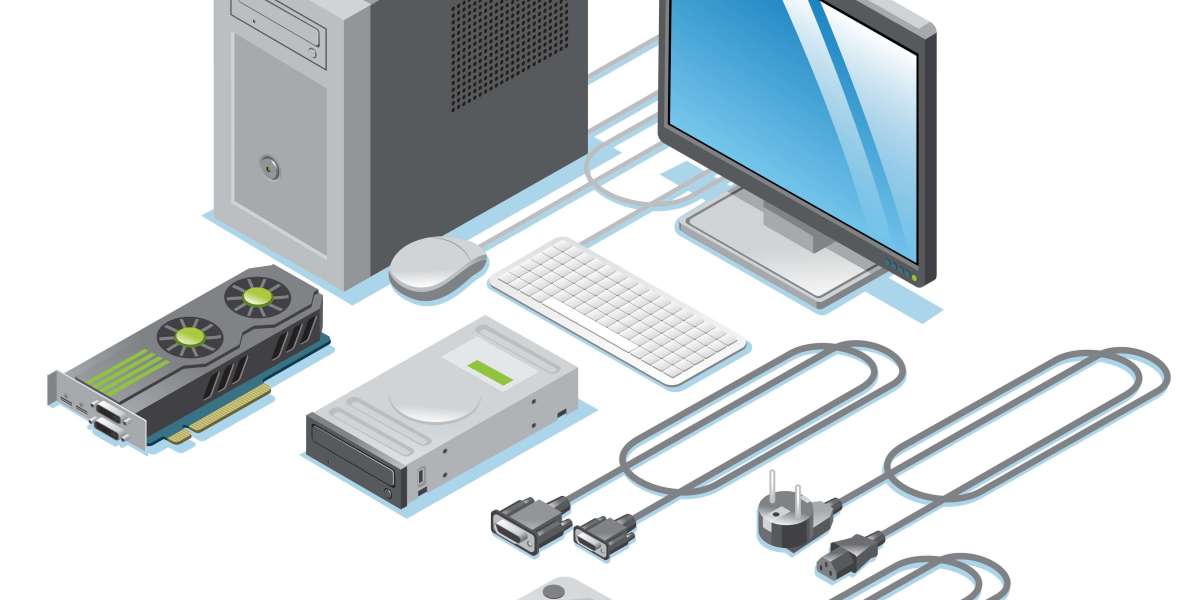With technology evolving at a rapid pace, audiovisual (AV) hardware has become an integral part of our lives. Whether it's for home theater, music, gaming or professional applications, selecting the right AV equipment is essential for enjoying quality entertainment and media. However, with the wide range of options available, it can be difficult to choose what suits your needs.
This guide aims to provide a comprehensive overview of various types of AV hardware and help you make an informed decision. We'll discuss essential components like speakers, soundbars, receivers, projectors and more. We'll also cover important factors to consider when purchasing equipment and pairing different devices. By the end, you'll have a solid understanding of the AV landscape and be equipped to build the perfect home theater or pro-level setup.
Speakers
Let's start with the core components - speakers. Speakers are devices that convert electrical audio signals into sound waves. The quality of your audio greatly depends on the speakers used.
Floorstanding Speakers
Floorstanding or tower speakers are tall, freestanding speaker cabinets that sits directly on the floor. They offer excellent bass response due to larger drivers and cabinets. Floorstanders are best for home theater setups where you want powerful and accurate sound for movies. High-end brands include Klipsch, B&W and Paradigm.
Bookshelf Speakers
Bookshelf or monitor speakers rest horizontally on a shelf or speaker stand. They have smaller cabinets but still produce clear and detailed sound. Bookshelf speakers are more compact and affordable compared to floorstanders. Some top options are ELAC, KEF, Wharfedale.
In-wall & In-ceiling Speakers
In-wall and in-ceiling speakers are installed flush inside walls or ceilings during construction. They provide discrete, clutter-free sound ideal for whole-home audio systems. Ensure proper installation for optimal performance. Key manufacturers are Klipsch, Polk and Bose.
Soundbars
A soundbar is a single speaker or speaker system that produces surround sound when placed in front of a TV or computer monitor. They are very popular due to compact size and ease of setup.
Budget Soundbars
Budget soundbars under $200 like Creative Stage, Yamaha YAS or Vizio offer basic audio enhancement over TV speakers. They work well for casual TV viewing but don't compare to dedicated speakers.
Mid-range Soundbars
Mid-range options between $200-500 like Sonos Beam, Yamaha YAS-209 or Bose Soundbar 500 have fuller sound and features like virtual surround effect. They are a good all-in-one solution for most users.
High-end Soundbars
For true cinema-like experience, high-end soundbars over $500 from brands like Sonos, Bose, Samsung and LG are worth considering. Models offer Dolby Atmos support along with deep bass and immersive soundstage for music and movies. Some even include dedicated subwoofers and surround speakers.
Receivers
A home theater receiver, also called AV receiver, is the central hub that connects all your audio/video components together. It decodes and amplifies audio signals to drive multiple speakers for surround sound. Quality receivers are important for full enjoyment of movies and shows.
Entry-level Receivers
Entry-level receivers under $300 like Yamaha R-S202 or Onkyo TX-SR373 are basic 5-channel models sufficient for a 2-speaker setup. They offer the essentials for casual users on a budget.
Mid-range Receivers
Stepping up to mid-range receivers from $300-700 like Denon AVR-S650H or Yamaha RX-A680 provides more power and features like 4K HDR passthrough and networking. Ideal for moderate 5.1 setups.
High-end Receivers
For comprehensive home theater systems, consider high-end receivers over $700 from top brands like Marantz, Integra and Anthem. They have advanced room correction, multi-channel amplification and support latest audio formats. Some even come with built-in streaming.
Projectors
A projector displays video images or computer screens onto a big screen or projection surface like ALR screen or pull-down screen. It's a must-have for immersive theater viewing on a huge scale.
Entry-level Projectors
Budget projectors under $500 such as ViewSonic PX727-4K, Epson Home Cinema 2040 or BenQ TH685 offer basic Full HD resolution for smaller rooms on a modest budget. Short throw models are convenient.
Mid-range Projectors
Mid-range units between $500-1500 like BenQ HT3550, Optoma UHD35 or Epson Home Cinema 4000 provide enhanced 4K/UHD picture quality with HDR on slightly larger screens best suited for family rooms.
High-end Projectors
For truly cinematic experiences, premium projectors exceeding $1500 from top brands like JVC, Sony, Epson or Panasonic deliver stellar picture definition with 1080p or 4K resolution on huge projector screens with dynamic range. Great for dedicated home theaters. Advanced tri-laser models also ensure low maintenance.
Related Hardware
In addition to core components, there are several related AV hardware products required for a full-fledged home theater system.
Surround Sound Systems
Surround sound speakers like Dolby Atmos compatible models can enhance immersion by playing audio from overhead or specific directions. Brands include Klipsch, Boston Acoustics, Polk Audio.
Audio Cables
High-quality, well-shielded audio cables like HDMI, optical, RCA, speaker wire are needed to wire all devices together cleanly without signal loss. Key vendors are Monoprice, AmazonBasics, Mediabridge.
Power Conditioners
Power conditioners stabilize power fluctuations ensuring steady electricity for all electronics. High-end models also block electromagnetic interference. Key companies are Panamax, Furman, APC.
Subwoofers
Separately amplified subwoofers play deep bass frequencies to produce cinematic rumble. SVS, Rythmik, HSU Research offer best-in-class subs from compact to massive for truly visceral home theater experiences.
Additional Tips
When putting together a home theater system, in addition to choosing quality hardware, consider some other important factors for the best AV experience:
Room Layout - Set up equipment strategically keeping dimensions and speakers placements for optimal sound.
Calibration - Use features like Audyssey, AccuEQ or manual settings to fine-tune sound levels and let hardware perform at its fullest capacity.
-Streaming Services - Connect devices to streaming platforms for convenient smart home access to content like Netflix, Spotify, YouTube for whole-home entertainment.
-Accessories - Round off the system with add-ons like universal remotes, equipment racks/storage, speaker mounts for a seamless setup.
Conclusion
Building the right custom AV system requires research, planning and investment. But a well-designed setup can hugely enhance your enjoyment of content, movies, music and gaming for years. I hope this guide has given you a comprehensive understanding of the various hardware components, things to consider as well as manufacturers to help choose equipment fit for your unique needs. Getting the right speakers, receivers, projectors and associated gear is key for the ultimate immersive experience at home.
Read Related:- https://avtweeps.blogspot.com/2023/10/The-Role-of-an-AV-Technician-Skills-Responsibilities-and-Career-Outlook.html








